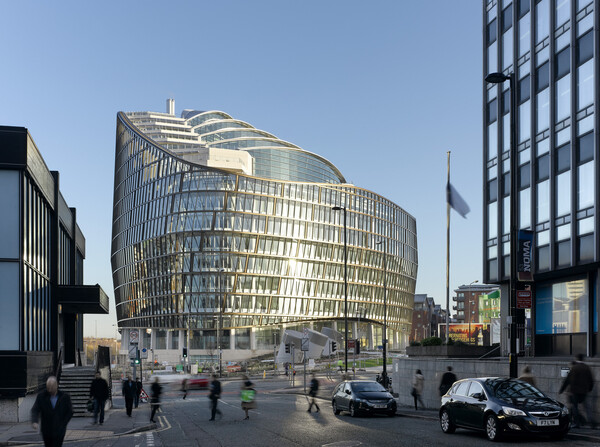
Net-Zero Carbon Buildings: Pioneering Sustainability in Construction and Operation
In an era where the urgency of addressing environmental sustainability and the imminent specter of climate change has never been more palpable, the concept of net-zero carbon buildings has risen to prominence as a beacon of hope amidst the global challenges we face. These buildings stand as pioneers of eco-conscious construction and operation, embodying the aspirations of a world committed to reversing the tide of carbon emissions. What was once a distant dream has now become an urgent mandate for architects, engineers, and developers across the globe: to achieve net-zero carbon emissions not only in the operational lifespan of these structures but also throughout their construction and entire lifecycle. This remarkable undertaking encompasses a multifaceted approach, requiring a meticulous reduction in energy consumption, the seamless integration of renewable energy sources, and the adoption of carbon offset measures. In this comprehensive exploration, we embark on a journey through the intricate world of net-zero carbon buildings, uncovering their profound significance, the formidable challenges they pose, and the cutting-edge strategies and technologies that render them a pivotal force in the realm of sustainable development.
.jpg)
Defining Net-Zero Carbon Buildings
Net-zero carbon buildings, often referred to as NZCBs, embody a groundbreaking paradigm shift in the way we design, construct, and operate structures while keeping their carbon footprints to an absolute minimum. At the heart of this concept lies a straightforward but profoundly impactful principle: the net carbon emissions associated with these buildings over their entire lifecycle, which spans from the initial construction phase to eventual demolition, must be entirely offset by an equivalent removal of carbon from the atmosphere. Achieving this intricate balance demands a multifaceted approach that harmonizes energy efficiency, the utilization of renewable energy sources, and the strategic deployment of carbon offsetting measures.

Construction Phase
The journey towards net-zero carbon emissions begins with the construction phase. Traditional construction processes are notorious for their significant environmental impact, primarily due to energy-intensive operations and resource consumption.
To mitigate these issues, net-zero carbon buildings prioritize the following strategies:
Sustainable Materials: The selection of construction materials assumes a pivotal role in curbing a building's carbon footprint. Increasingly, builders opt for sustainable and locally sourced materials, which not only reduce transportation-related emissions but often possess lower embodied carbon content.
Energy-Efficient Construction Techniques: Leveraging energy-efficient construction methods, such as off-site fabrication and modular construction, significantly diminishes energy consumption during the building's assembly while expediting the process.
Waste Minimization: Minimizing construction waste through meticulous planning and the implementation of recycling measures is paramount for reducing the building's overall carbon impact.
Operational Phase
Following their construction, net-zero-carbon buildings continue to excel in minimizing their carbon emissions during their operational lifespan.
Key strategies for accomplishing this objective encompass:
Energy Efficiency: The incorporation of advanced insulation, highly efficient HVAC (Heating, Ventilation, and Air Conditioning) systems, and smart building management systems optimize energy utilization, ensuring that buildings operate as efficiently as possible.
Renewable Energy: Integrating renewable energy sources like solar panels, wind turbines, and geothermal heating to generate on-site clean energy. Often, these systems produce surplus energy, which can be fed back into the grid, further reducing the building's carbon footprint.
Behavioral Changes: Encouraging occupants to adopt eco-friendly habits, such as reducing energy consumption and water usage, can considerably contribute to a decrease in the building's operational carbon emissions.
Continuous Monitoring: The employment of advanced monitoring and control systems enables real-time tracking and optimization of energy and resource consumption. These systems facilitate the identification of areas for improvement, ensuring that the building remains as energy-efficient as possible throughout its operational phase.
Carbon Offset Measures
While the ultimate goal of net-zero carbon buildings is complete carbon neutrality, it is acknowledged that, in certain circumstances, the total elimination of carbon emissions may not be feasible. In such cases, carbon offset measures come into play as a crucial element of the net-zero equation. These measures are designed to counterbalance any remaining carbon emissions through initiatives such as afforestation (planting new forests), reforestation (rehabilitating existing forests), or investments in carbon capture and storage technologies. By adopting a holistic approach that combines these strategies, net-zero carbon buildings represent a beacon of hope in our ongoing battle to combat climate change and secure a more sustainable future for generations to come.

The Significance of Net-Zero Carbon Buildings
Net-zero carbon buildings hold immense significance in the global effort to combat climate change. Their impact is multifaceted, influencing various aspects of society, the environment, and the economy.
Environmental Impact
Carbon Reduction: Net-zero carbon buildings directly contribute to reducing carbon emissions, thus helping mitigate the global climate crisis.
Resource Conservation: Sustainable construction materials and practices decrease resource depletion and environmental degradation.
Biodiversity Preservation: By encouraging green building designs, these structures support urban biodiversity, fostering healthier ecosystems.
Economic Benefits
Energy Savings: Lower energy consumption in net-zero carbon buildings translates to reduced operational costs, benefiting both occupants and building owners.
Market Value: These buildings often command higher market values and can attract a premium in the real estate market due to their sustainable features.
Job Creation: The transition to net-zero carbon buildings creates jobs in green construction, renewable energy production, and related sectors.
Social Advantages
Occupant Health and Comfort: Sustainable design principles contribute to healthier indoor environments, leading to improved occupant well-being.
Education and Awareness: Net-zero carbon buildings serve as educational tools, raising awareness about sustainable living and environmental responsibility.
Community Engagement: Such buildings often involve communities in their design and operation, fostering a sense of shared responsibility for sustainability.
Challenges and Solutions
Achieving net-zero carbon emissions in construction and operation is not without its challenges. Nonetheless, architects, engineers, and researchers are continually developing innovative solutions to overcome these obstacles.
.jpg)
Cost Considerations
Challenge: Sustainable materials and energy-efficient technologies can sometimes be more expensive upfront.
Solution: Financial incentives, tax credits, and subsidies can make sustainable building more affordable. Additionally, the long-term cost savings from reduced energy consumption can offset initial expenses.
Technological Advancements
Challenge: The rapid pace of technological change can make it challenging to select the most appropriate and efficient technologies.
Solution: Continuous research and development ensure that new, more efficient technologies become readily available. Collaboration between industry and academia is essential in this regard.
Behavioral Change
Challenge: Changing occupant behavior to promote sustainability can be challenging.
Solution: Building awareness through education, incentivizing eco-friendly practices, and using smart building technologies to automate energy-saving actions can facilitate behavioral change.
Policy and Regulation
Challenge: Inconsistent or inadequate regulations and policies can hinder the adoption of sustainable building practices.
Solution: Governments and local authorities can incentivize net-zero carbon-building practices through robust regulations, tax incentives, and supportive policies.
Illuminating Real-World Examples
To illustrate the transformative potential of net-zero carbon buildings, let's explore a few notable real-world examples:

The Edge - Amsterdam, Netherlands
Designed as the world's greenest office building, The Edge incorporates an array of sustainable features, including solar panels, rainwater harvesting, and an intelligent lighting system that adjusts to individual preferences. It generates more energy than it consumes, achieving net-zero carbon emissions in operation.

One Angel Square - Manchester, United Kingdom
One Angel Square, the headquarters of the Co-operative Group, boasts impressive sustainability credentials. It utilizes combined heat and power (CHP) technology, rainwater harvesting, and a double-skin facade for insulation. The building's sustainable design and operations make it a net-zero carbon facility.

The Bullitt Center - Seattle, USA
The Bullitt Center in Seattle is one of the world's greenest commercial buildings. It relies entirely on on-site renewable energy, with photovoltaic panels covering its roof. Rainwater is collected and treated for use within the building, and its composting toilets reduce water usage. The Bullitt Center exemplifies net-zero carbon operation.
The Path Ahead: A Sustainable Future
In the face of a rapidly changing climate and the pressing need to address carbon emissions, the concept of net-zero carbon buildings stands as a beacon of hope on the path toward a sustainable future. These remarkable structures encapsulate the essence of sustainable practices and innovative technologies that are indispensable in the global struggle against climate change. In the race against time to reduce carbon emissions, net-zero carbon buildings serve as tangible proof that we have the knowledge and tools to forge a greener and more resilient world.
Achieving net-zero carbon emissions in both the construction and operation of buildings is a monumental undertaking, and it necessitates a collective effort from governments, industries, and communities. Each of these stakeholders plays a pivotal role in advancing sustainable building practices.
In conclusion, net-zero carbon buildings are not just a concept; they are a blueprint for a more sustainable world. Their significance reaches far beyond their energy-efficient and environmentally responsible characteristics. They hold the potential to stimulate economic growth, foster social progress, and safeguard our planet's precious natural resources. By dedicating resources, time, and effort to the development and widespread adoption of net-zero carbon building practices, we are actively paving the way for a brighter, more sustainable future—one building at a time. As we embark on this transformative journey, let us remember that the path to sustainability is not just a choice; it is a responsibility we owe to future generations and to the health and resilience of our planet.
Check https://app.bidlight.com for how BidLight can help you estimate your BIM model!